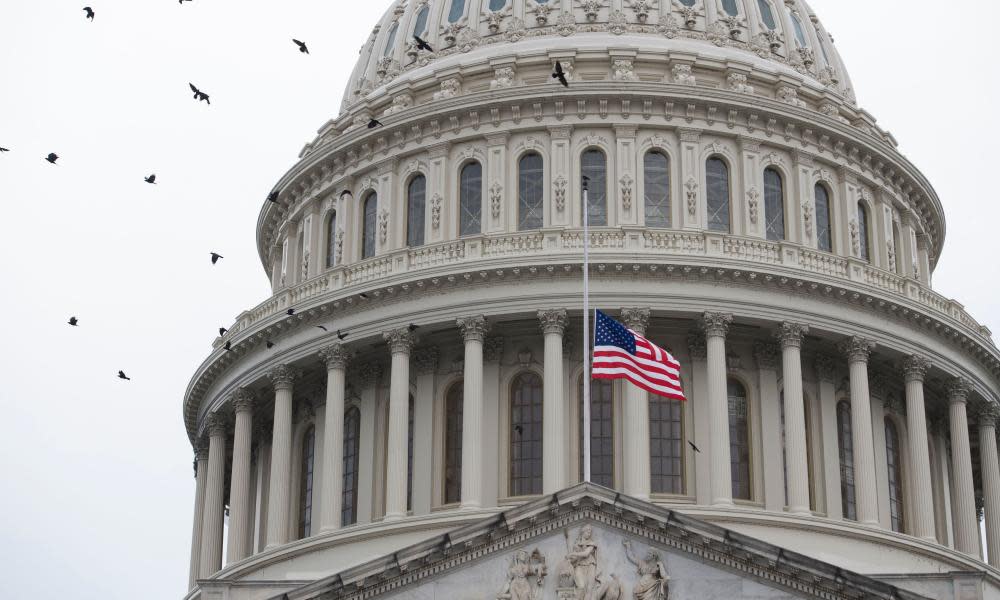Trump has nominated Barrett to the supreme court – what happens next?

Donald Trump on Saturday nominated Amy Coney Barrett to fill the supreme court seat vacated with the death of Ruth Bader Ginsburg. Republicans in the US Senate are expected to move immediately to confirm the choice.
That will be accomplished when they can hold a vote on the nominee on the Senate floor, with a bare majority of voting senators needed to confirm the pick. Any tie would be broken by the vice-president, Mike Pence.
The Republicans appear to have plenty of time to complete the job before the end of the current congressional term on 2 January 2021, which is 99 days away. Of the eight justices currently serving on the court, the average number of days from nomination to final Senate vote has been 72 days, according to the Congressional Research Service.
Here are the steps in the process:
Related: Who is Amy Coney Barrett? Trump's anti-abortion supreme court nominee
1. Pre-hearing investigation
After the US president officially notifies the senate of his pick, the judiciary committee, led by close Trump ally senator Lindsey Graham of South Carolina, will conduct an investigation of the nominee that includes a background check and that would usually include a request for advice from the American Bar Association, the country’s largest consortium of lawyers. As part of the process, the nominee was expected to hold meetings with senators, although Covid-19 restrictions could limit in-person meetings.
2. Public confirmation hearings
This is the part of the supreme court confirmation process that would be most familiar to most people. In televised hearings, the nominee answers questions from the senate judiciary committee. The committee may also call other witnesses to testify for or against the nominee. At times these hearings can be contentious, as two years ago when justice Brett Kavanaugh was confronted with sexual assault allegations by Dr Christine Blasey Ford.
Democrats were expected to fiercely grill Trump’s latest nominee on her views on abortion, on the prospect of a contested election, and other issues such as healthcare.
3. Committee sends nomination to Senate floor
At the end of confirmation hearings, the judiciary committee votes on the nominee. A majority vote is required to recommend the nominee for a vote by the full Senate on the Senate floor. Because Republicans hold a majority in the senate, and a majority of the committee seats, the nominee is expected to win the committee’s recommendation. The committee then reports the vote out and a full Senate vote is scheduled.
Graham said in an interview on Fox News earlier this month that he would try to arrange a floor vote before the 3 November election, although senate majority leader Mitch McConnell may wish to hold the vote after the election, because some vulnerable Republican senators up for re-election could be politically damaged by supporting a third Trump supreme court nominee.
4. Full senate vote
If the nominee can win a majority of votes in the Senate, she will replace Ginsburg on the court. While the length of the entire process would not be unusually short if such a vote were to be held late in the year, it would be highly unusual for a new supreme court justice to be installed so late in a presidential term.
According to the National Constitution Center, “the most-recent justices confirmed by the Senate in a December Senate during a presidential election year were William Burnham Woods (in 1880), Ward Hunt (in 1872) and Salmon Chase (in 1864 as chief justice).”
Trump has said he wants the new justice installed on the court in time to hear any case arising from a potential challenge to the 3 November presidential election result. Most analysts saw the prospect of a new Trump justice weighing in in his favor in an election case as a surefire disaster for the legitimacy of the court, which already has been eroded by the perception that Republicans stole a seat in 2016 by refusing for eight months to hold hearings on Barack Obama nominee Merrick Garland.

 Yahoo News
Yahoo News 
